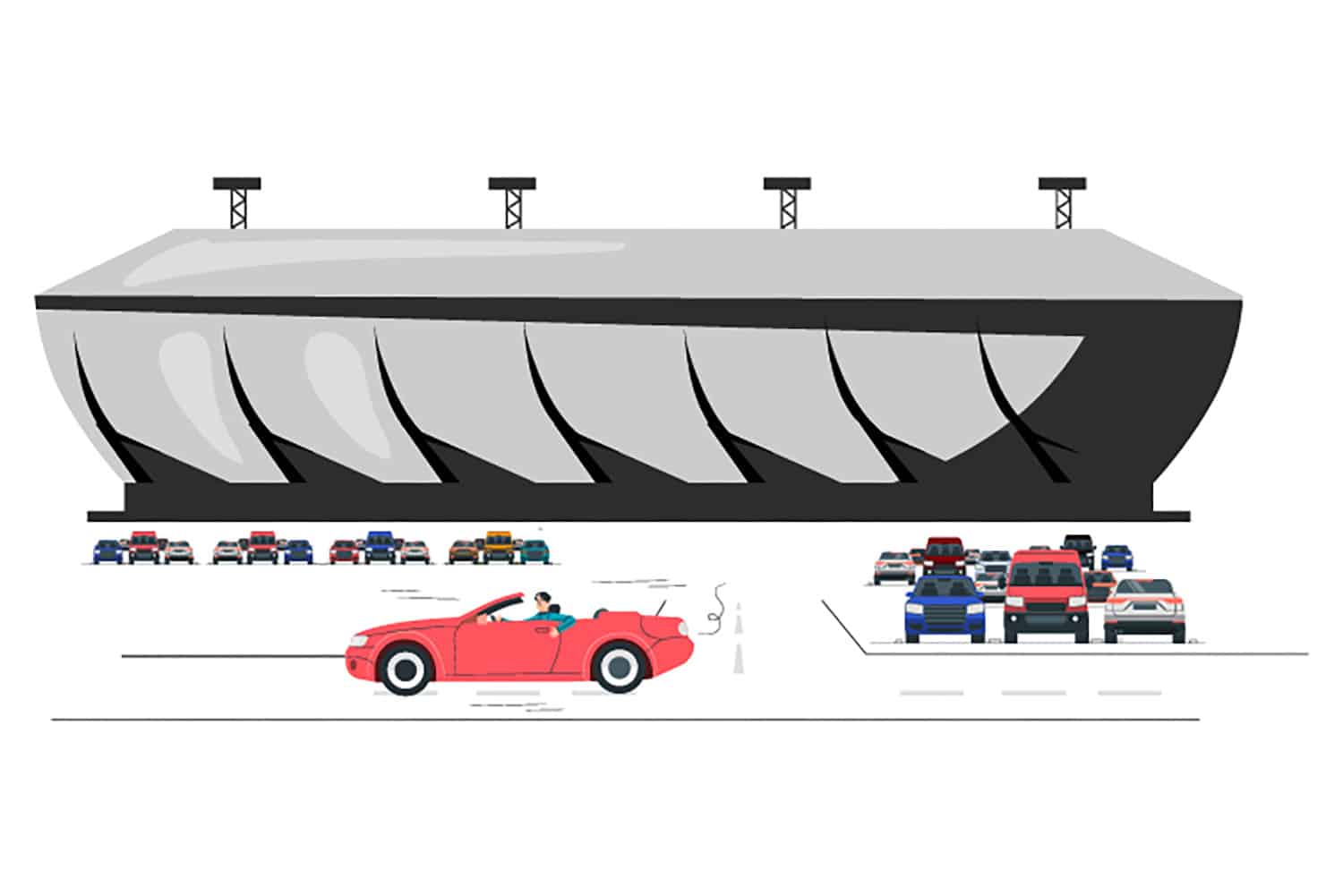
The Connected Stadium
Venue Management’s Most Exciting Technology Had Its Roots in Parking
When Major League Soccer’s newest franchise, St. Louis CITY SC, hosted its inaugural game at CITYPARK on March 4, 2003, soccer fans enjoyed an extraordinary experience thanks to groundbreaking Connected Stadium technology. The technology allows fans to use a single credential on their smart phones to access everything the stadium has to offer. When fans arrive at the stadium, their credential connects the fan’s device to an enterprise platform which allows them to access and pay for parking, enter the stadium, and even pay for concessions and souvenirs. There are no paper tickets and there’s no need for cash or credit cards.
Table of Contents
The Connected Stadium was developed by SKIDATA. The technology utilizes a combination of specialized software, web-based services, and hardware to improve the fan experience while opening new revenue streams for stadiums and the teams they host.
“The connected stadium is the future of venue management, providing complete access to an event and all the associated services with a single credential,” said Andrew Feffer, Head of Venues and Events for SKIDATA. “There is no better way to provide an exceptional fan experience.”
The Connected Experience
The fan’s experience begins when they purchase their tickets. When fans buy tickets to a game or another event, they are also able to reserve parking for that event. The game ticket or credential also serves as a parking pass, and the parking fee is automatically charged to the purchaser’s account. Once the fan reserves parking, the system sends an email or text confirming the purchase and providing directions to the area within the parking facility providing the most convenient access to their seats.
The credential includes a bar code that is associated with the account, and it is integrated securely into Apple or Google wallets for easy access. When the fan pulls up to the parking gate, they merely hold their phone next to the reader and the equipment lets them into the parking facility. The system records their entry and subsequent exit times and bills the account accordingly.
“The Connected Stadium will quickly become the norm when it comes to event management. The technology gives teams, stadium managers, and other event managers
the ability to provide the most convenient fan experience possible. And it provides new avenues for generating revenue and connecting, in the most personal way, with fans.”
In facilities offering EV charging, the system can also be used to reserve an EV charging space, assuring that charging will be available when the fan arrives. EV charging services can be integrated into the facility’s PARCS system, and the charging fee can be added to the cost of parking.
When it is time to enter the stadium, the same credential functions as the event ticket, with the bar code providing access to the stadium at ticket gates. E-ticketing has become the standard at many stadiums, arenas, and concert venues, and Connected Stadium technology takes it to the next level.
Once inside the event, the fan’s personal device provides access to all the services that are typically offered at sporting events, including concessions and souvenirs. When purchasing these items, fans merely scan their credential, and their accounts are automatically charged.
A More Targeted Fan Experience
The Connected Stadium provides a much more convenient and enjoyable experience for fans, but it also benefits the team. The platform provides rich data to the stadium’s operations managers so they can better understand individual fan preferences and behaviors. This allows them to craft an individualized experience for each fan.
But the Connected Stadium’s benefits to stadium managers really begins before the event itself. The platform allows stadium managers to conduct a pre-event check allowing them to virtually test all issued tickets to make sure operations will work seamlessly on the day of the event. If any issues arise during the pre-event check, stadium and event managers can adjust where needed.
The pre-event check can also have security implications. The simulation can be set to check all tickets based on whitelists and blacklists to identify whether any fans have been banned from the stadium for previous bad behavior. This is an important benefit for stadium security officials who are responsible for the safety of participants, fans, and staff.
But the biggest administrative advantage is the way the technology allows teams and stadium managers to cater the stadium experience to individual fan preferences. For instance, if a fan uses their credential to purchase food, the platform creates a record of what that fan bought. When the fan returns to the stadium for another game or a special event in the future, the team can offer special promotions or discounts on the food the fan has purchased in the past. Likewise, if a fan buys a jersey or another souvenir, the team can use a record of that transaction to suggest a particular souvenir purchases at future games.
These special offerings can extend outside the stadium as well. For instance, if a St. Louis CITY, SC fan purchases a Roman Bürki jersey at a game, the team gets a record of that purchase. The next time Bürki does a public appearance locally, the team could invite that fan—and anyone else who purchased his jersey—to the event. It’s a great way to tailor the fan experience to individual preferences.
Professional teams from the NFL, NHL, NBA, and MLS have been introducing elements of the connected stadium for years. St. Louis CITY SC is the first professional sports team in the U.S. to completely integrated the technology into their operations.
“As one of the few professional sports teams with our new stadium, offices, practice facilities, and parking structures all located within one urban setting, we chose to invest in campus-wide technologies that support a seamless and fully connected fan experience,” said Matt Sebek, St. Louis CITY SC Chief Experience Officer. “This approach allows us to manage the entire guest journey from parking to ticketing to multi-channel commerce – while also simplifying the operational management of many roles and permissions on our campus.” ◆
-
Bill Smithhttps://parking-mobility-magazine.org/author/bill-smith/December 1, 2021
-
Bill Smithhttps://parking-mobility-magazine.org/author/bill-smith/January 1, 2022
-
Bill Smithhttps://parking-mobility-magazine.org/author/bill-smith/March 3, 2022



The Evolution of Event Parking
How a Mobility Sector Changes in the Face of Challenge








